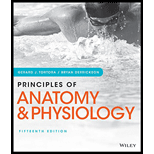
Principles of Anatomy and Physiology
15th Edition
ISBN: 9781119329398
Author: Gerard J Tortora, Bryan Derrickson
Publisher: John Wiley & Sons Inc
expand_more
expand_more
format_list_bulleted
Concept explainers
Textbook Question
Chapter 4, Problem 5CP
Why are epithelial and connective tissues found adjacent to each other?
Expert Solution & Answer
Want to see the full answer?
Check out a sample textbook solution
Students have asked these similar questions
Why are epithelial and connective tissues found adjacent to each other?
What is the major difference between epithelial and connective tissues?
What characteristics are common to all epithelial tissues?
Chapter 4 Solutions
Principles of Anatomy and Physiology
Ch. 4 - l. Define a tissue.
Ch. 4 - What are the four basic types of human tissues?Ch. 4 - 3. Which type of cell junction prevents the...Ch. 4 - Which types of cell junctions are found in...Ch. 4 - 5. Why are epithelial and connective tissues found...Ch. 4 - Describe the various layering arrangements and...Ch. 4 - What characteristics are common to all epithelial...Ch. 4 - Checkpoint 8:
How is the structure of the...Ch. 4 - Where are endothelium and mesothelium located?Ch. 4 - Prob. 10CP
Ch. 4 - In what ways does connective tissue differ from...Ch. 4 - What are the features of the cells, ground...Ch. 4 - 13. How are connective tissues classified? List...Ch. 4 - Describe how the structure of the following...Ch. 4 - What is the difference between interstitial and...Ch. 4 - 16. Define the following kinds of membranes:...Ch. 4 - Where is each type of membrane located in the...Ch. 4 - 18. Which types of muscular tissue are striated?...Ch. 4 - Which types of muscular tissue have gap junctions?Ch. 4 - 20. What are the functions of the dendrites, cell...Ch. 4 - 21. Why is electrical excitability important to...Ch. 4 - 22. How are stromal and parenchymal repair of a...Ch. 4 - What is the importance of granulation tissue?Ch. 4 - 24. What common changes occur in epithelial and...Ch. 4 - 1. Imagine that you live 50 years in the future,...Ch. 4 - 2. You are entering a “Cutest Baby Contest” and...Ch. 4 - Prob. 3CTQ
Additional Science Textbook Solutions
Find more solutions based on key concepts
Name the components (including muscles) of the thoracic cage. List the contents of the thorax.
Human Physiology: An Integrated Approach (8th Edition)
15. A good scientific hypothesis is based on existing evidence and leads to testable predictions. What hypothes...
Campbell Biology: Concepts & Connections (8th Edition)
How does the formation of CaCO3 skeletons by calcareous phytoplankton retard CO2 uptake and help maintain ocean...
Brock Biology of Microorganisms (15th Edition)
All of the following processes are involved in the carbon cycle except: a. photosynthesis b. cell respiration c...
Human Biology: Concepts and Current Issues
Distinguish between nucleus and nucleoid.
Microbiology: Principles and Explorations
Distinguish between microevolution, speciation, and macroevolution.
Campbell Essential Biology (7th Edition)
Knowledge Booster
Learn more about
Need a deep-dive on the concept behind this application? Look no further. Learn more about this topic, biology and related others by exploring similar questions and additional content below.Similar questions
- List the general characteristics of epithelium, and then describe the basic types of epithelial tissues in terms of specific characteristics and functions.arrow_forwardThe four primary types of tissue are __________________, _________, _________, and __________________.arrow_forward___ tissues are sheetlike with one free surface. a. Epithelial b. Muscle c. Nervous d. Connectivearrow_forward
- Which of the following is not a type of connective tissue? a. bone b. blood c. the spinal cord d. tendons e. the tissue that attaches epithelial tissue to underlying structuresarrow_forwardList the major types of connective tissues; add the names and characteristics of their specific types.arrow_forward_______ tissues are sheetlike with one free surface. a. Epithelial b. Connective c. Nervous d. Musclearrow_forward
- The term tissue can apply either to one of the four primary tissue types or to a particular organs aggregate of cellular and extracellular components. (True or false?)arrow_forwardWhich types of cell junctions are found in epithelial tissue?arrow_forwardWhy is blood considered to be the most unusual type of connective tissue?arrow_forward
arrow_back_ios
SEE MORE QUESTIONS
arrow_forward_ios
Recommended textbooks for you
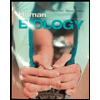 Human Biology (MindTap Course List)BiologyISBN:9781305112100Author:Cecie Starr, Beverly McMillanPublisher:Cengage Learning
Human Biology (MindTap Course List)BiologyISBN:9781305112100Author:Cecie Starr, Beverly McMillanPublisher:Cengage Learning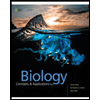
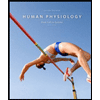 Human Physiology: From Cells to Systems (MindTap ...BiologyISBN:9781285866932Author:Lauralee SherwoodPublisher:Cengage Learning
Human Physiology: From Cells to Systems (MindTap ...BiologyISBN:9781285866932Author:Lauralee SherwoodPublisher:Cengage Learning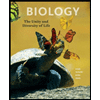 Biology: The Unity and Diversity of Life (MindTap...BiologyISBN:9781305073951Author:Cecie Starr, Ralph Taggart, Christine Evers, Lisa StarrPublisher:Cengage Learning
Biology: The Unity and Diversity of Life (MindTap...BiologyISBN:9781305073951Author:Cecie Starr, Ralph Taggart, Christine Evers, Lisa StarrPublisher:Cengage Learning

Human Biology (MindTap Course List)
Biology
ISBN:9781305112100
Author:Cecie Starr, Beverly McMillan
Publisher:Cengage Learning


Human Physiology: From Cells to Systems (MindTap ...
Biology
ISBN:9781285866932
Author:Lauralee Sherwood
Publisher:Cengage Learning

Biology: The Unity and Diversity of Life (MindTap...
Biology
ISBN:9781305073951
Author:Cecie Starr, Ralph Taggart, Christine Evers, Lisa Starr
Publisher:Cengage Learning


Types of Human Body Tissue; Author: MooMooMath and Science;https://www.youtube.com/watch?v=O0ZvbPak4ck;License: Standard YouTube License, CC-BY